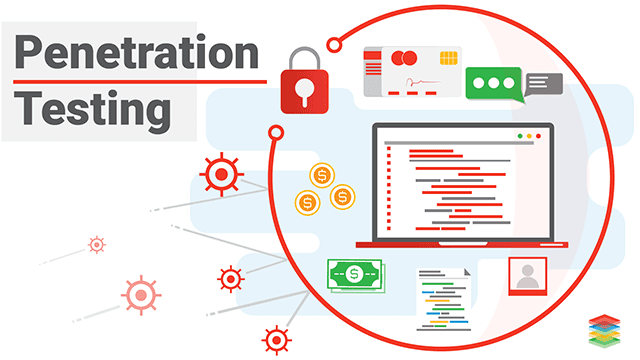
In today’s rapidly evolving digital landscape, cybersecurity has become a fundamental pillar for businesses, governments, and individuals alike. As cyber threats become more sophisticated, it’s crucial to have robust defenses in place to safeguard sensitive data and systems. One of the most effective ways to assess your organization’s security posture is through penetration testing (often referred to as pen testing). Penetration testing involves simulating cyberattacks on systems, networks, or applications to identify vulnerabilities before malicious actors can exploit them. To perform pen testing effectively, various penetration testing standards and methodologies have been established to ensure consistency, accuracy, and thoroughness.
In this blog, we’ll explore the top penetration testing standards and methodologies used by cybersecurity professionals to uncover vulnerabilities and enhance organizational security.
Before we dive into the standards and methodologies, it’s important to understand why penetration testing is a crucial component of any cybersecurity strategy. Penetration testing helps businesses:
With the increasing frequency and complexity of cyberattacks, penetration testing ensures that your organization stays one step ahead of cybercriminals.
Penetration testing standards and methodologies offer structured approaches to conducting tests, ensuring all critical aspects of security are covered. Here are the top frameworks you should know about:
The OWASP Testing Guide is one of the most widely recognized frameworks for conducting penetration tests on web applications. OWASP provides a comprehensive methodology for identifying and testing common vulnerabilities in web applications such as SQL injection, cross-site scripting (XSS), and broken authentication.
The NIST Special Publication 800-115 is a highly regarded framework developed by the National Institute of Standards and Technology. It provides a structured process for conducting technical security assessments, including penetration tests. NIST emphasizes four key phases in penetration testing:
Planning: Setting the goals, scope, and rules of engagement.
Discovery: Gathering intelligence about the target system or network.
Attack: Attempting to exploit identified vulnerabilities.
Reporting: Documenting the findings and providing recommendations.
Best For: Government agencies and businesses seeking to comply with U.S. federal security regulations.
Why It’s Important: NIST SP 800-115 is particularly useful for organizations needing a methodical approach to identifying and addressing vulnerabilities in IT systems and applications.
The OSSTMM is one of the most in-depth penetration testing frameworks available, providing a scientific approach to security testing. It covers five distinct areas of security testing, including information security, physical security, and communications security. OSSTMM emphasizes:
Information Security: Assessing the confidentiality, integrity, and availability of data.
Process Security: Evaluating the security of internal processes.
Communications Security: Testing the security of communication systems and networks.
Physical Security: Checking for physical security risks such as unauthorized access.
Best For: Organizations looking for a comprehensive and scientific approach to penetration testing across multiple security domains.
Why It’s Important: OSSTMM provides a holistic view of organizational security, making it one of the most thorough testing methodologies.
The Penetration Testing Execution Standard (PTES) is a step-by-step framework that ensures consistency and thoroughness in penetration testing. It includes seven distinct phases:
For businesses that handle credit card transactions, the PCI DSS (Payment Card Industry Data Security Standard) requires regular penetration testing to ensure the security of payment systems. The PCI DSS Penetration Testing Guide provides specific guidelines for testing networks and applications that handle cardholder data.
The ISSAF is a security assessment framework that integrates multiple security testing methods, including penetration testing. It focuses on both technical and administrative controls to provide a comprehensive view of an organization’s security landscape.
CREST is a globally recognized organization that sets high standards for penetration testing and certifies both organizations and individuals. CREST certification is known for its rigor and is considered a mark of excellence in the penetration testing industry.
With cyber threats growing in complexity, organizations cannot afford to overlook the importance of penetration testing. Following established penetration testing standards and methodologies ensures that security assessments are thorough, reliable, and actionable. Whether you’re a small business securing web applications or a large enterprise safeguarding critical infrastructure, adopting one of these top penetration testing frameworks will provide the guidance needed to protect your digital assets.
Take proactive steps to secure your organization by implementing a penetration testing strategy today. Don’t wait until it’s too late!